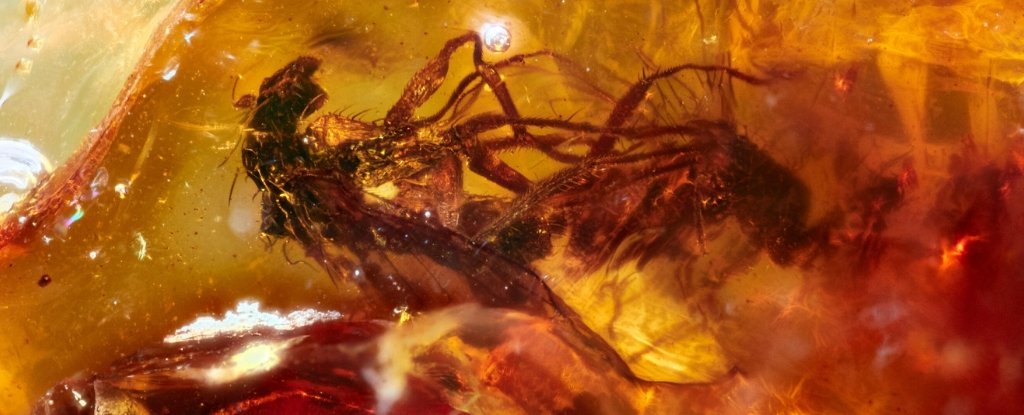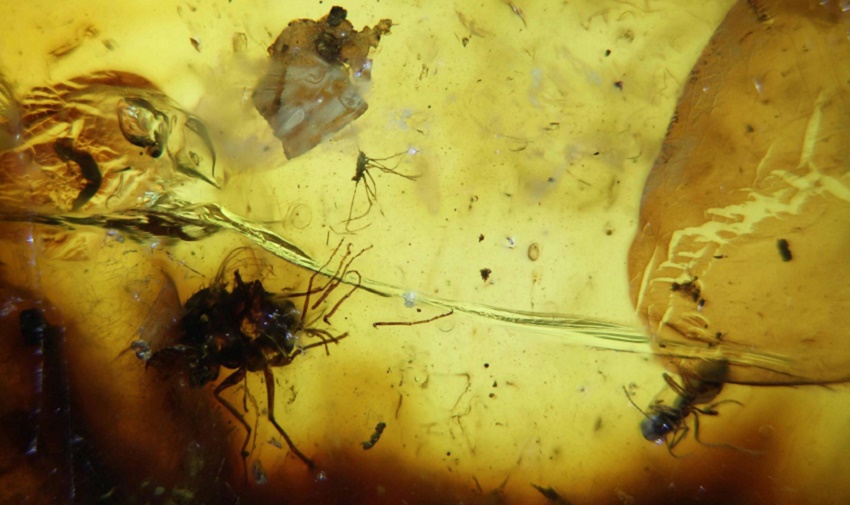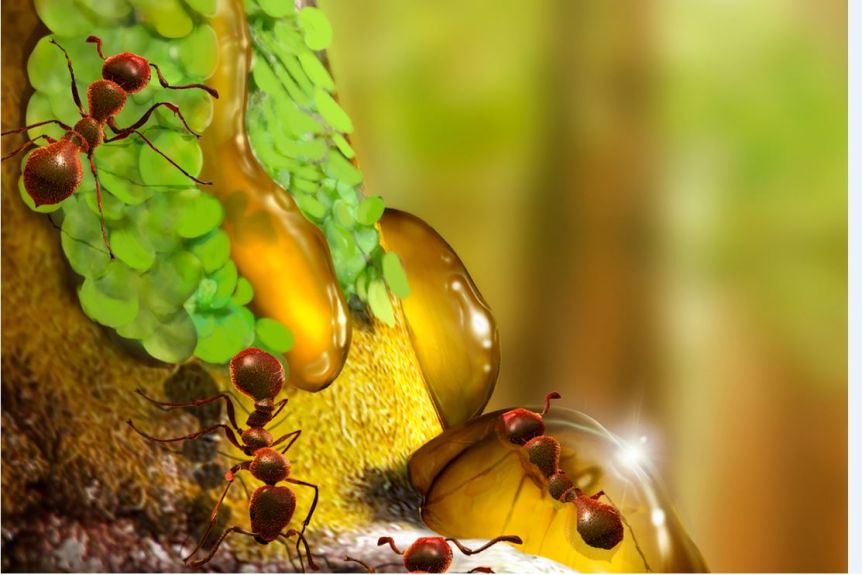Amber Fossil Shows Two Trapped Flies that Died while Mating 41 Million Years Ago
One of the earliest, fossilized animals ever found are a pair of fornicating flies that were preserved in amber 41 million years ago. The frisky insects appear to have been in the very throes of passion when they got trapped in gluey tree resin and preserved — unparted, even in death.

With time, the resin has transformed into amber and still has a twisted leg in the amorous couple. The fact that flies typically only take a few seconds to copulate makes the fossil find from Victoria, Australia even more rare and remarkable.
‘ You might conclude that the fly of these long legs was ‘ messed up ‘ 41 million years ago, ” said paper author and paleontologist Jeffrey Stilwell of the University of Monash at Melbourne, He was certain this was the scenario when the specimen was first analyzed — a fact which co-author Dan Bickel, a fly expert from the Australian Museum, then confirmed.
‘The flies could have accidentally landed on the tree resin to mate, and then got stuck forever together, literally,’ Professor Stilwell said.
‘You can imagine all of the statements by my amber student volunteers, one being “Doin’ it Gondwana style”, etc.’ Gondwana was an ancient supercontinent that eventually split into separate landmasses — including Australia.
Mating has been captured in amber unearthed from other parts of the world, but is nevertheless ‘very rare’, Professor Stilwell said. In Steven Spielberg’s 1993 film Jurassic Park, dinosaurs are reintroduced to the world by extracting their DNA from a mosquito that had been preserved in amber. Most biologists agree that such a scenario would not be possible. But many experts do believe that DNA can be preserved in amber for millions of years.

‘But, in fact, [they] are many millions of years old, providing us with an enormous amount of information on ancient terrestrial ecosystems.’
Professor Stilwell and colleagues stumbled upon the flies while trawling through almost 6,000 pieces of fossilized amber. The material was unearthed from rocks dating back from 54–40 million years ago found at two sites — one in Western Tasmania and the other in Victoria.
Among them were the two mating specimens of long-legged flies, known to the scientific community as ‘Dolichopodidae’. These bugs are commonly found across Britain and the rest of the world today.
‘This may be the first example of “frozen behaviour” in the fossil record of Australia,’ said Professor Stilwell.
‘Frozen behaviours are rarely recorded in the fossil record, but can be quite diverse, including defence, parasitism, feeding, swarms, and so on.’
Dolichopodidae comprises mainly small metallic flies. The adult males wave their legs when courting potential suitors. Other finds from the amber collection included a flake of amber containing a beautifully preserved biting midge and a larger piece with a long-legged fly and another biting midge.
Both specimens are about 41 million years old and were found in Anglesea, Victoria. The team also analyzed amber deposits unearthed by the team at other spots in southeastern Australia, Tasmania and New Zealand that dates back 230 million years. There were fossilized ants, the first Australian fossils of ‘slender springtails’, a tiny, wingless arthropod and an insect called a felt scale (Eriococcidae) — all-around 53 million years old.
There was also a cluster of juvenile spiders, biting midges (Ceratopogonidae), two liverwort and two moss species. They are the oldest known animals and plants preserved in amber from Southern Gondwana. Finding Triassic, Cretaceous and Paleogene fossils from an ancient tree resin in Australia and eastern New Zealand is a dream come true,’ said Professor Stilwell.

‘We now have our first definite glimpses of ancient subpolar greenhouse Earth ecosystems, when Australia and Antarctica were attached and situated much further south in higher latitudes.’
‘Many discoveries are the first-ever for their respective groups of animals and plants, including the first-ever ants, springtails and others, including the first recorded evidence for “frozen behaviour” in the fossil record of mating flies.’
‘There has never been a fossil ant recorded in Australia before, but we can now state for the first time that ants have been a significant part of the Australian ecosystem for over 40 million years.’ Most amber records are from the Northern Hemisphere. The study has confirmed it was abundant in the ancient supercontinents of Southern Pangea and Southern Gondwana.
‘The research furthers our understanding of prehistoric southern ecosystems in Australia and New Zealand during the Late Triassic to mid-Paleogene periods — 230 to 40 million years ago,’ added Professor Stilwell.





